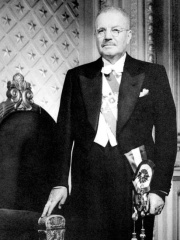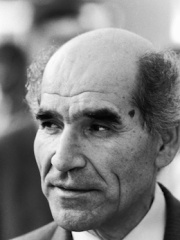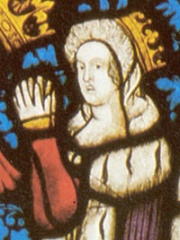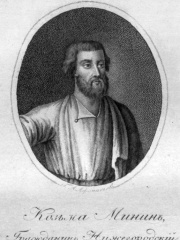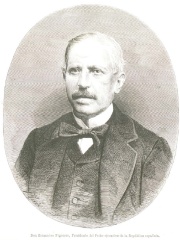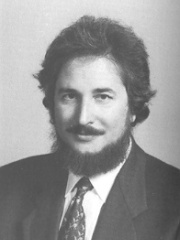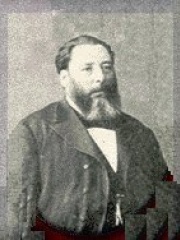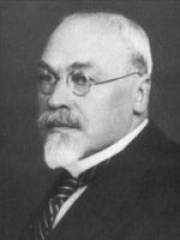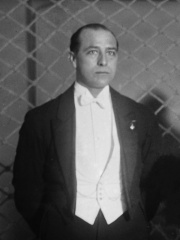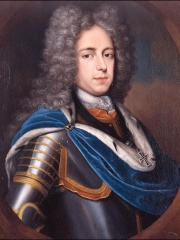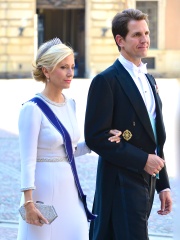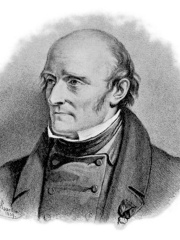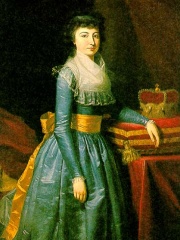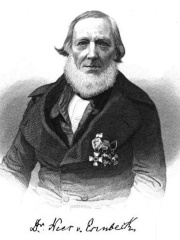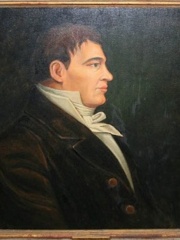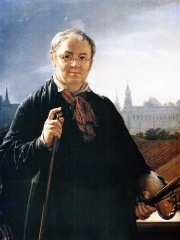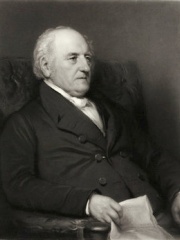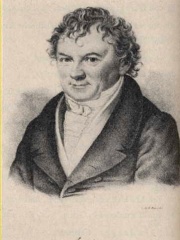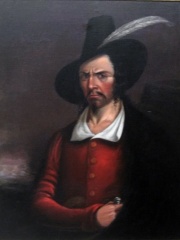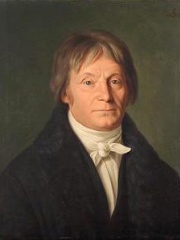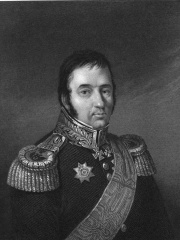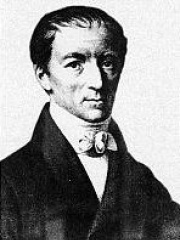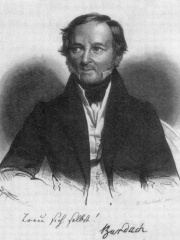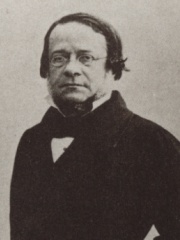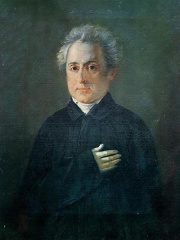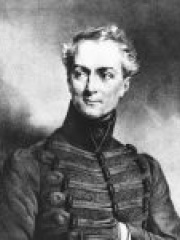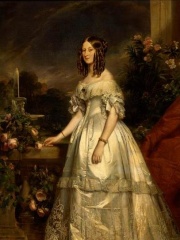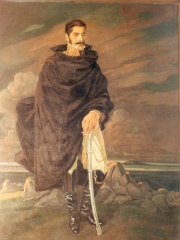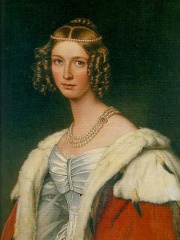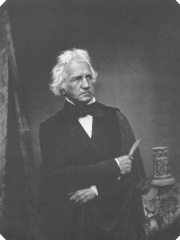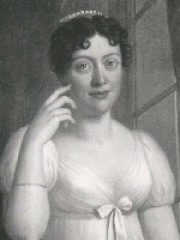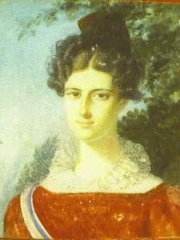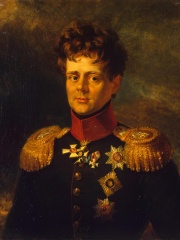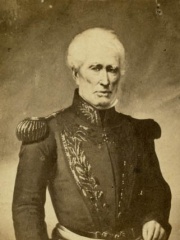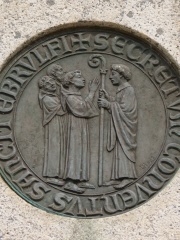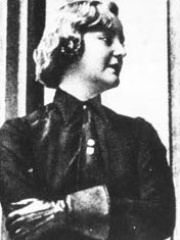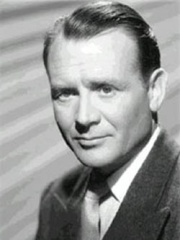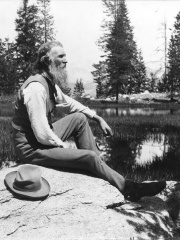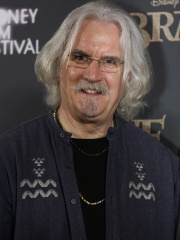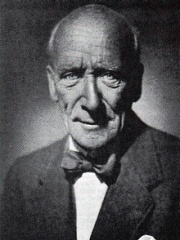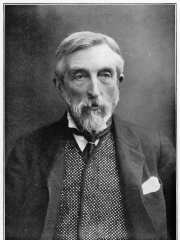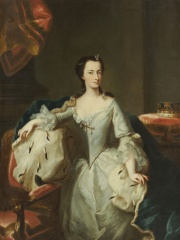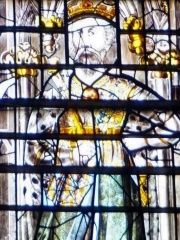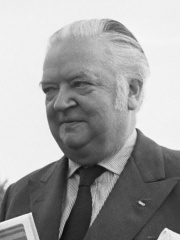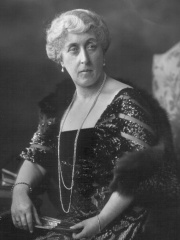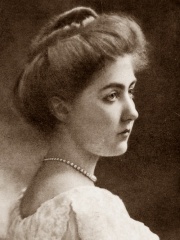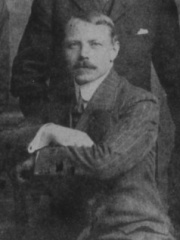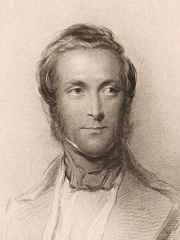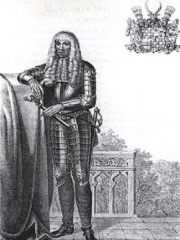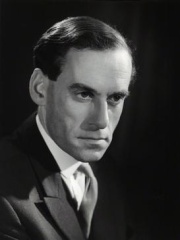Politician
Princess Mary, Duchess of Gloucester and Edinburgh
1776 - 1857
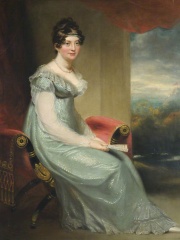
 Princess Mary, Duchess of Gloucester and Edinburgh
Princess Mary, Duchess of Gloucester and Edinburgh
Princess Mary, Duchess of Gloucester and Edinburgh (25 April 1776 – 30 April 1857) was the eleventh child and fourth daughter of King George III and his consort Charlotte of Mecklenburg-Strelitz. She married her first cousin, Prince William Frederick, Duke of Gloucester and Edinburgh, when both were 40, and was his widow in later life. In her last years, her niece Queen Victoria was on the throne as the fourth monarch during Mary's life, after her father and two of her brothers, George IV and William IV. Dying aged 81 at Gloucester House, Weymouth, Mary was the longest-lived and last survivor of George III's fifteen children (thirteen of whom lived to adulthood). Read more on Wikipedia
Her biography is available in 27 different languages on Wikipedia (up from 26 in 2024). Princess Mary, Duchess of Gloucester and Edinburgh is the 9,027th most popular politician (up from 9,389th in 2024), the 1,985th most popular biography from United Kingdom (down from 1,891st in 2019) and the 322nd most popular British Politician.
Memorability Metrics
Page views of Princess Mary, Duchess of Gloucester and Edinburgh by language
Among Politicians
Among politicians, Princess Mary, Duchess of Gloucester and Edinburgh ranks 9,027 out of 19,576. Before her are Carlos Ibáñez del Campo, Qahhor Mahkamov, Emperor Cheng of Jin, Elisabeth of Bohemia, Kuzma Minin, and Estanislao Figueras. After her are Franco Trappoli, José Hernández, Gustavs Zemgals, Victor Boin, Henry Casimir II, Prince of Nassau-Dietz, and Pavlos, Crown Prince of Greece.
Most Popular Politicians in Wikipedia
Go to all RankingsCarlos Ibáñez del Campo
1877 - 1960
HPI: 62.24
Rank: 9,026
Qahhor Mahkamov
1932 - 2016
HPI: 62.24
Rank: 9,027
Emperor Cheng of Jin
321 - 342
HPI: 62.24
Rank: 9,028
Elisabeth of Bohemia
1358 - 1373
HPI: 62.24
Rank: 9,029
Kuzma Minin
1616 - 1616
HPI: 62.24
Rank: 9,030
Estanislao Figueras
1819 - 1882
HPI: 62.24
Rank: 9,031
Princess Mary, Duchess of Gloucester and Edinburgh
1776 - 1857
HPI: 62.24
Rank: 9,032
Franco Trappoli
1947 - Present
HPI: 62.24
Rank: 9,033
José Hernández
1834 - 1886
HPI: 62.24
Rank: 9,034
Gustavs Zemgals
1871 - 1939
HPI: 62.24
Rank: 9,035
Victor Boin
1886 - 1974
HPI: 62.24
Rank: 9,036
Henry Casimir II, Prince of Nassau-Dietz
1657 - 1696
HPI: 62.24
Rank: 9,037
Pavlos, Crown Prince of Greece
1967 - Present
HPI: 62.24
Rank: 9,038
Contemporaries
Among people born in 1776, Princess Mary, Duchess of Gloucester and Edinburgh ranks 22. Before her are Pehr Henrik Ling, Archduchess Maria Leopoldine of Austria-Este, Christian Gottfried Daniel Nees von Esenbeck, Simon Fraser, Vasily Tropinin, and Peter Barlow. After her are Friedrich Stromeyer, Jean Lafitte, Joseph Görres, Vasily Golovnin, Gottfried Reinhold Treviranus, and Karl Friedrich Burdach. Among people deceased in 1857, Princess Mary, Duchess of Gloucester and Edinburgh ranks 31. Before her are Daniele Manin, Dionysios Solomos, Augustinos Kapodistrias, Princess Victoria of Saxe-Coburg and Gotha, Manuel Oribe, and Vasily Tropinin. After her are Théodolinde de Beauharnais, Christian Daniel Rauch, Princess Henriette of Nassau-Weilburg, Infanta Ana de Jesus Maria of Braganza, Duke Eugen of Württemberg, and William Brown.
Others Born in 1776
Go to all RankingsPehr Henrik Ling
WRITER
1776 - 1839
HPI: 64.63
Rank: 16
Archduchess Maria Leopoldine of Austria-Este
POLITICIAN
1776 - 1848
HPI: 63.48
Rank: 17
Christian Gottfried Daniel Nees von Esenbeck
BIOLOGIST
1776 - 1858
HPI: 63.23
Rank: 18
Simon Fraser
EXPLORER
1776 - 1862
HPI: 63.12
Rank: 19
Vasily Tropinin
PAINTER
1776 - 1857
HPI: 62.51
Rank: 20
Peter Barlow
MATHEMATICIAN
1776 - 1862
HPI: 62.28
Rank: 21
Princess Mary, Duchess of Gloucester and Edinburgh
POLITICIAN
1776 - 1857
HPI: 62.24
Rank: 22
Friedrich Stromeyer
CHEMIST
1776 - 1835
HPI: 61.85
Rank: 23
Jean Lafitte
PIRATE
1776 - 1826
HPI: 61.54
Rank: 24
Joseph Görres
WRITER
1776 - 1848
HPI: 61.51
Rank: 25
Vasily Golovnin
POLITICIAN
1776 - 1831
HPI: 61.34
Rank: 26
Gottfried Reinhold Treviranus
PHYSICIAN
1776 - 1837
HPI: 61.29
Rank: 27
Karl Friedrich Burdach
PHYSICIAN
1776 - 1847
HPI: 61.00
Rank: 28
Others Deceased in 1857
Go to all RankingsDaniele Manin
POLITICIAN
1804 - 1857
HPI: 63.88
Rank: 25
Dionysios Solomos
WRITER
1798 - 1857
HPI: 62.86
Rank: 26
Augustinos Kapodistrias
POLITICIAN
1778 - 1857
HPI: 62.76
Rank: 27
Princess Victoria of Saxe-Coburg and Gotha
POLITICIAN
1822 - 1857
HPI: 62.71
Rank: 28
Manuel Oribe
POLITICIAN
1792 - 1857
HPI: 62.67
Rank: 29
Vasily Tropinin
PAINTER
1776 - 1857
HPI: 62.51
Rank: 30
Princess Mary, Duchess of Gloucester and Edinburgh
POLITICIAN
1776 - 1857
HPI: 62.24
Rank: 31
Théodolinde de Beauharnais
NOBLEMAN
1814 - 1857
HPI: 62.20
Rank: 32
Christian Daniel Rauch
SCULPTOR
1777 - 1857
HPI: 62.08
Rank: 33
Princess Henriette of Nassau-Weilburg
POLITICIAN
1780 - 1857
HPI: 62.06
Rank: 34
Infanta Ana de Jesus Maria of Braganza
NOBLEMAN
1806 - 1857
HPI: 61.36
Rank: 35
Duke Eugen of Württemberg
POLITICIAN
1788 - 1857
HPI: 61.14
Rank: 36
William Brown
MILITARY PERSONNEL
1777 - 1857
HPI: 60.74
Rank: 37
In United Kingdom
Among people born in United Kingdom, Princess Mary, Duchess of Gloucester and Edinburgh ranks 1,985 out of 8,785. Before her are William Cavendish-Bentinck, 3rd Duke of Portland (1738), Evelyn Beatrice Hall (1868), Orderic Vitalis (1075), Unity Mitford (1914), David Yates (1963), and John Mills (1908). After her are Roger Williamson (1948), Wayne Rooney (1985), John Muir (1838), Billy Connolly (1942), Algernon Blackwood (1869), and David Byrne (1952).
Others born in United Kingdom
Go to all RankingsWilliam Cavendish-Bentinck, 3rd Duke of Portland
POLITICIAN
1738 - 1809
HPI: 62.27
Rank: 1,979
Evelyn Beatrice Hall
WRITER
1868 - 1956
HPI: 62.27
Rank: 1,980
Orderic Vitalis
WRITER
1075 - 1142
HPI: 62.26
Rank: 1,981
Unity Mitford
SOCIAL ACTIVIST
1914 - 1948
HPI: 62.26
Rank: 1,982
David Yates
FILM DIRECTOR
1963 - Present
HPI: 62.25
Rank: 1,983
John Mills
ACTOR
1908 - 2005
HPI: 62.24
Rank: 1,984
Princess Mary, Duchess of Gloucester and Edinburgh
POLITICIAN
1776 - 1857
HPI: 62.24
Rank: 1,985
Roger Williamson
RACING DRIVER
1948 - 1973
HPI: 62.24
Rank: 1,986
Wayne Rooney
SOCCER PLAYER
1985 - Present
HPI: 62.24
Rank: 1,987
John Muir
MOUNTAINEER
1838 - 1914
HPI: 62.23
Rank: 1,988
Billy Connolly
ACTOR
1942 - Present
HPI: 62.23
Rank: 1,989
Algernon Blackwood
OCCULTIST
1869 - 1951
HPI: 62.23
Rank: 1,990
David Byrne
FILM DIRECTOR
1952 - Present
HPI: 62.21
Rank: 1,991
Among Politicians In United Kingdom
Among politicians born in United Kingdom, Princess Mary, Duchess of Gloucester and Edinburgh ranks 322. Before her are Charles Booth (1840), Princess Mary of Great Britain (1723), Ine of Wessex (700), Michael Morris, 3rd Baron Killanin (1914), Princess Helena Victoria of Schleswig-Holstein (1870), and William Cavendish-Bentinck, 3rd Duke of Portland (1738). After her are Gerry Adams (1948), Princess Patricia of Connaught (1886), Herbert Pitman (1877), James Broun-Ramsay, 1st Marquess of Dalhousie (1812), Edward Fortunatus (1565), and Jeremy Thorpe (1929).
Charles Booth
1840 - 1916
HPI: 62.52
Rank: 316
Princess Mary of Great Britain
1723 - 1772
HPI: 62.44
Rank: 317
Ine of Wessex
700 - 728
HPI: 62.42
Rank: 318
Michael Morris, 3rd Baron Killanin
1914 - 1999
HPI: 62.35
Rank: 319
Princess Helena Victoria of Schleswig-Holstein
1870 - 1948
HPI: 62.32
Rank: 320
William Cavendish-Bentinck, 3rd Duke of Portland
1738 - 1809
HPI: 62.27
Rank: 321
Princess Mary, Duchess of Gloucester and Edinburgh
1776 - 1857
HPI: 62.24
Rank: 322
Gerry Adams
1948 - Present
HPI: 62.15
Rank: 323
Princess Patricia of Connaught
1886 - 1974
HPI: 62.12
Rank: 324
Herbert Pitman
1877 - 1961
HPI: 62.11
Rank: 325
James Broun-Ramsay, 1st Marquess of Dalhousie
1812 - 1860
HPI: 62.10
Rank: 326
Edward Fortunatus
1565 - 1600
HPI: 62.06
Rank: 327
Jeremy Thorpe
1929 - 2014
HPI: 62.06
Rank: 328
